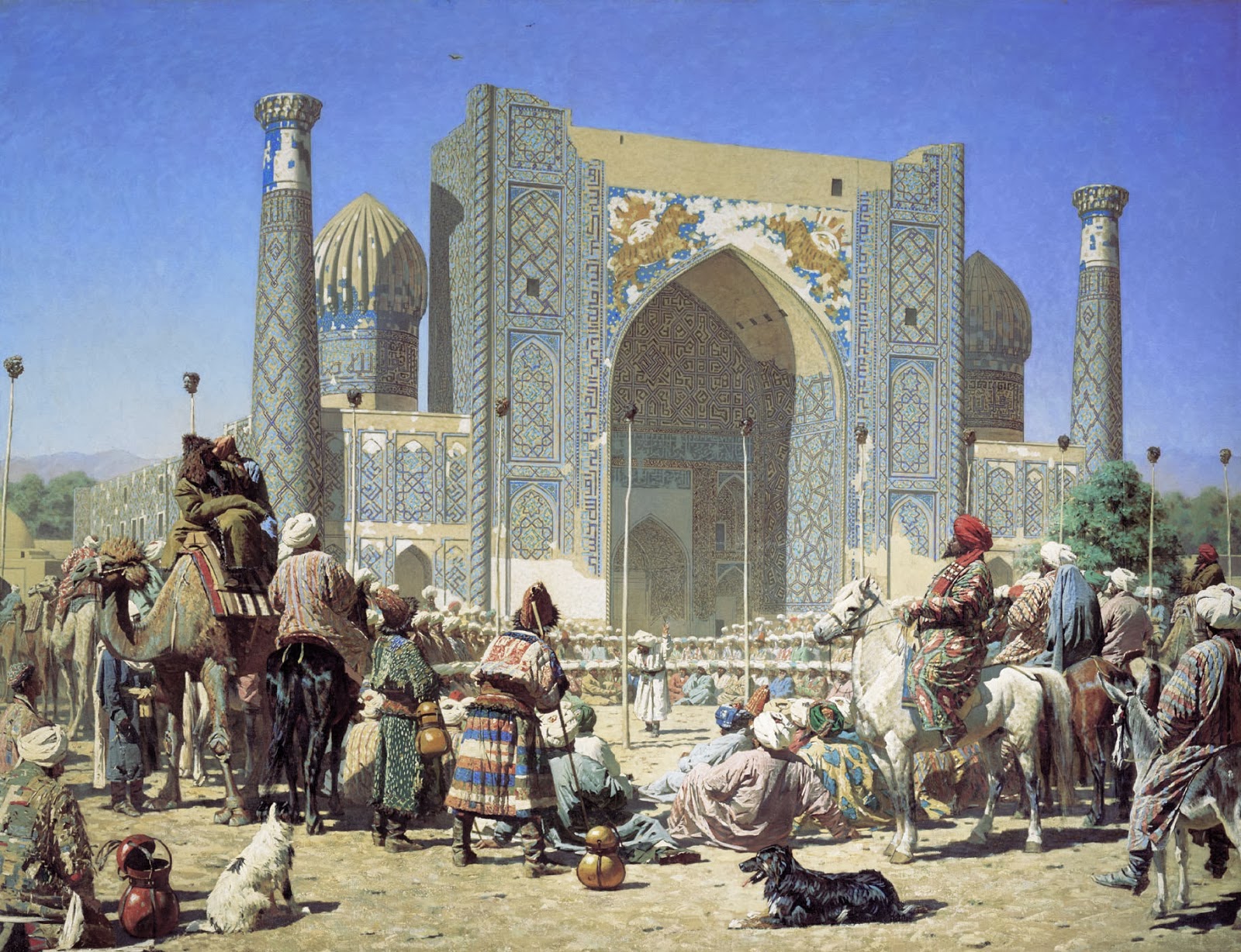Of the Scarlet Sultanate's peculiar
institutions, one alone stands out enough to be capitalized,
Industrial Necromancy.
Though roundly criticized by the
priests of Ilmuqah the Third Moon, whose own divine words
characterized the black art as that of “ahmoq” (which roughly
translates to “the hardened excrement of an ocular bat”), it is a
proscription roundly ignored due to its sheer profitability. Indeed
though impossible by the metaphysics of Zem to pull off in the safe,
dull confines of the corelands parts of Himyar, the entire
economic basis of the satrapies bordering the Weird revolves around
the zombie-worked, state-owned plantation system.
Due to the willful historical amnesia
of that land's coreland inhabitants, who like many walled-off
citizens in human existence prefer not to know how the metaphorical
sausage is made, how this came to be is only murkily known. It is
highly likely though that its time-misted origins lie in the macabre
law from the suspected necrophile Sultan Eraam of the Twenty Pillars
(who is said to have been a “colossal pervert” even by the
standards of the Yellow sultans of that time) that deeded the corpses
of all who die in the land to his personal estate.
It is also known that the inglorious smashings of the various
Latter Hyperborean successor rump states by the (then) Pahr, Nemec,
and the little-known Madeupname barbarian hordes, left those
necromancer-kings who hadn't molted into space-god apotheosis without
gainful employment. Carpet bags in hand many of the more fortunate
such emigres ended up in middle-management positions as satraps of
the Sultanate's outlying and entirely unprofitable marches.
Hoary old histories aside, the craft of
the necromancer today has slumped away from the artistry that
produced behemoth flesh-crawlers, trumpeting zombastadons and other
fell wonders toward the more practical trade that primarily centers
around the fast and large-scale production of the workaday undead,
the Husk Zombie.
Husk Zombies
No. Enc.: 4d6 (6d6)
Alignment: Chaotic (Evil)
Movement: 120’ (40’)
Armor Class: 7
Hit Dice: 2
Attacks: 1 (weapon, preferrably a
khopesh)
Damage: Weapon
Morale: 12
Exp: 30
The most striking aspect of the
appearance of the common Husk Zombie is the shriveled, dried-out
parchment-like skin pulled tight over the bony frame. Though the
brittleness of the skin gives a fragile look, the sustaining power of
that railroad-verse called the Anti-Cantons imbues the creature with
a surprising strength in its new existence.
Unlike your typical murderhole zombie,
the husk zombie retains a flickering of its human intelligence and
consciousness and can be ordered to maintain ranges of structured
tasks such as bringing in harvest or marching/wheeling in formation.




Ooh! Didn't know they were former Necromancer Kings (and their descendants). That is awesome.
ReplyDeleteYes some of the washouts that didn't make it to the Cerulean Vaults.
DeleteReminds me of CAS's "The Empire of the Necromancers:"
ReplyDeleteDead laborers made their palace-gardens to bloom with long-perished flowers; liches and skeletons toiled for them in the mines, or reared superb, fantastic towers to the dying sun. Chamberlains and princes of old time were their cupbearers, and stringed instruments were plucked for their delight by the slim hands of empresses with golden hair that had come forth untarnished from the night of the tomb. Those that were fairest, whom the plague and the worm had not ravaged overmuch, they took for their lemans and made to serve their necrophilic lust.
It should!
DeleteHah ... this reminds me of my former long-running setting of the Green County, where nearby was the glassed waste of the old necromancer lords of Turalia, where they taxed the bodies (but not the heads) of their subjects, using headless zombies for day-to-day industry.
ReplyDeleteThat's rather brilliant.
Delete